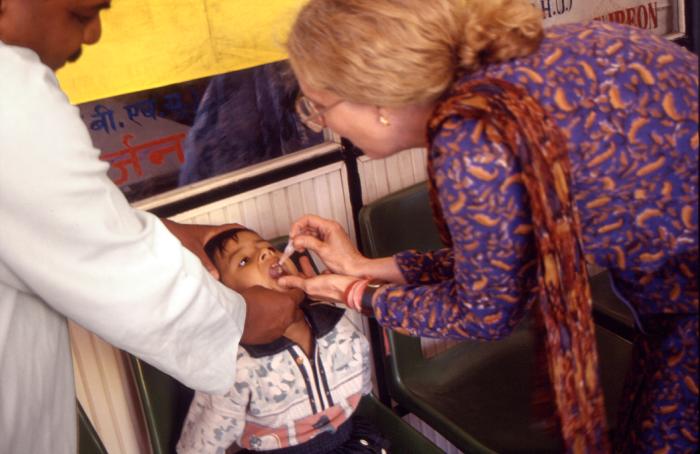On 13 January, WHO South-East Asia Region completes five years without any case of wild poliovirus. This is a remarkable achievement in view of the continued threat of poliovirus importation from the remaining polio-endemic countries.

Countries in the Region have been making commendable efforts, stepping up vigilance against polio and continuing to protect children against the crippling virus. WHO South-East Asia Region reported its last case of wild poliovirus in West Bengal, India, in 2011, which facilitated polio-free certification of the Region on 27 March 2014.
According to UNICEF, in 1985, India had 150,000 cases of polio. This had fallen to about 6,000 in 1991, to 741 in 2009 and to just 42 in 2010. In fact, in 2009, India had half of the reported cases of polio worldwide.
Completing half a decade without any case of wild poliovirus is yet another achievement and a reminder that we need to continue our efforts until the disease is eradicated globally. We need to ensure that our efforts and investment over the years to eradicate polio do not go waste. Globally, polio transmission is at its lowest ever levels. However, the risk of importation of the poliovirus into all polio-free areas persists.
As part of the Polio End Game strategy, countries in the Region are accelerating introduction of one dose of injectable inactivated polio vaccine (IPV) in childhood immunization schedules, along with plans for a globally synchronized, phased and sequential withdrawal of oral polio vaccines from the programme. These strategies are aimed at addressing all polio – including the rare cases of vaccine derived polio.
Our efforts to stop polio and now to keep the Region polio-free, has been possible due to numerous innovative strategies that helped strengthen immunization and disease surveillance, and promote community ownership. While these lessons learnt are now being adopted by the remaining endemic areas, countries in the Region need to replicate these strategies and optimally use the polio programme resources for other public health goals, particularly in the areas of immunization, surveillance and emergency response.
The year 2015 has had fewer cases in fewer places than ever before with only 70 wild polio virus cases in two countries reported, down from 347 in 2014.
A polio-free world is in sight. We must continue to make efforts and contribute to rid the world of the crippling disease.
Related:


3 thoughts on “India: Five year’s polio free”